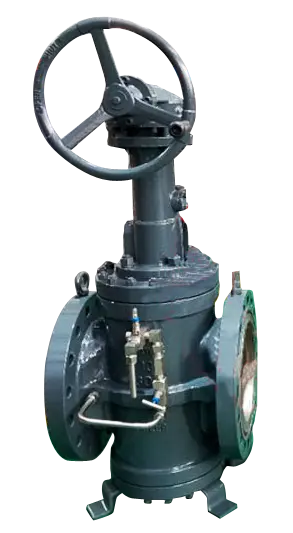Plug valves are widely valued in industrial applications for their straightforward design, reliable sealing, and rapid on-off functionality. Featuring a rotating plug, often cylindrical or conical, that aligns or obstructs fluid flow, these valves excel in quick isolation and direct control. However, when considering plug valves for throttling—or flow regulation—certain limitations come into play that affect performance, lifespan, and overall effectiveness. Here we explore the primary challenges and limitations that make plug valves generally unsuitable for throttling purposes.

1. Main Challenges of Using Plug Valves for Throttling
1.1 Wear and Tear
When a plug valve is partially opened for throttling, the design restricts the fluid passage, leading to a significant increase in flow velocity within the valve. High-velocity fluids tend to erode the surfaces of both the plug and the valve seat, causing premature wear. This is especially true in high-pressure systems, where the impact of accelerated flow velocity can become even more severe, exacerbating erosion. As a result, plug valves used in throttling may require more frequent maintenance and part replacement, which can increase operational costs over time. For applications that demand precise flow control, these wear concerns present a substantial drawback, especially compared to dedicated control valves designed with throttling in mind.
1.2 Difficulty in Achieving Precise Regulation
One of the essential characteristics of throttling is the ability to finely adjust the flow rate to match specific operational requirements. Plug valves, however, lack the design features that allow for smooth, linear flow regulation. Small adjustments to the plug valve position tend to cause significant changes in flow rate, making it difficult to achieve fine control. This non-linear response means operators may struggle to adjust flow precisely, limiting the valve’s usefulness in applications where maintaining a steady, controlled flow is crucial. By contrast, gate valves and control valves, specifically designed for such applications, offer more gradual and predictable flow adjustments.
1.3 Deterioration of Sealing Performance
Plug valves are most effective when they are either fully open or fully closed, where they deliver optimal sealing performance. However, when partially opened for throttling, the valve’s sealing surfaces can suffer from accelerated wear due to increased exposure to flowing media. Over time, this erosion can compromise the valve’s sealing integrity, leading to potential leakage and reducing the valve’s reliability. In high-stakes industrial environments, this risk of leakage poses serious concerns for system safety and efficiency, particularly in systems handling hazardous or high-pressure media. As a result, using plug valves in a partially open state is generally discouraged for applications that require long-term throttling.
2. Key Functional Advantages and Limitations of Plug Valves
The primary role of plug valves lies in on-off applications, where they enable rapid, reliable control. The straightforward operation of rotating a plug to open or close fluid flow makes these valves ideal for systems requiring quick isolation or emergency shutdown capabilities. Their reliable sealing performance also makes them effective for applications where preventing leaks is essential, particularly in systems transporting fluids or gases that should not be exposed to the environment.
Despite their benefits in on-off applications, plug valves are fundamentally limited in their capacity to regulate flow. While partially opening a plug valve can technically restrict flow to some extent, this is not recommended for throttling. The increased risk of wear, lack of precise control, and potential for seal degradation make them suboptimal choices for such applications.
3. Why Control Valves Are Preferable for Throttling Applications
In systems where precise, consistent throttling is needed, control valves are generally the preferred choice. Control valves are specifically engineered to handle the demands of flow regulation, including achieving linear or proportional flow adjustments, which plug valves cannot consistently provide. Additionally, control valves are often designed with materials and geometries that mitigate the effects of erosion and wear, extending their operational life even under partially open conditions. This design also ensures a steady flow rate and better system stability.
Similarly, gate valves, which feature a flat, sliding disc, are better suited for applications requiring precise flow control. Unlike plug valves, gate valves move incrementally, allowing operators to make small, controlled adjustments that are better suited for throttling. The linear motion of gate valves enables gradual increases or decreases in flow, making them suitable for maintaining precise flow conditions over time without compromising sealing performance.
Conclusion
In summary, while plug valves serve as effective on-off valves with excellent sealing performance, they are generally not suited for throttling. Attempting to use them in throttling applications increases wear and tear on both the plug and seat, limits the valve’s precision control, and accelerates the deterioration of sealing integrity. For applications demanding precise and sustained flow regulation, control valves or gate valves represent more suitable and reliable options. By using plug valves primarily for quick isolation, on-off operations, and short-duration flow adjustments, operators can leverage their strengths while avoiding the limitations associated with prolonged throttling use.
Next: Why is the Plug Valve Used?
Previous: Are Gate Valves Good for Flow Control?
